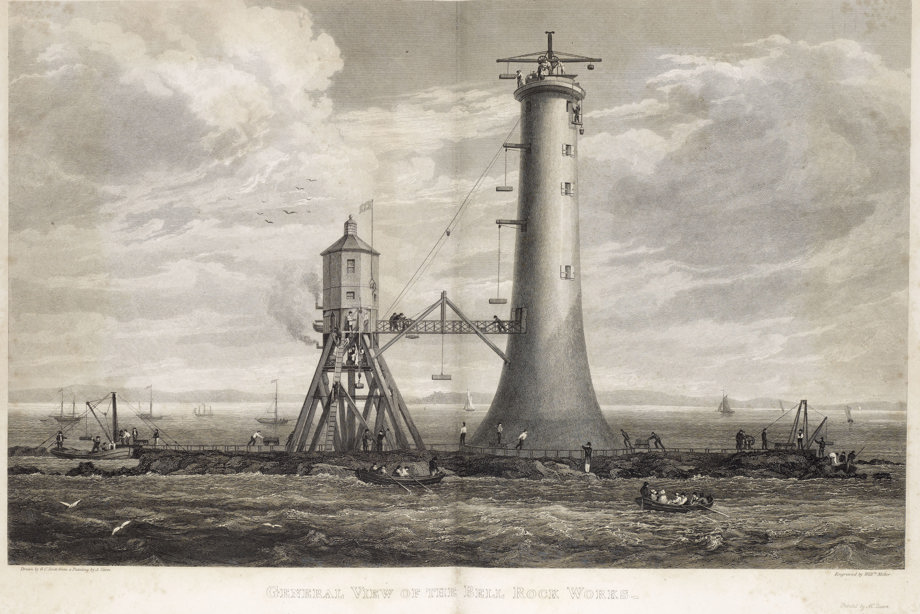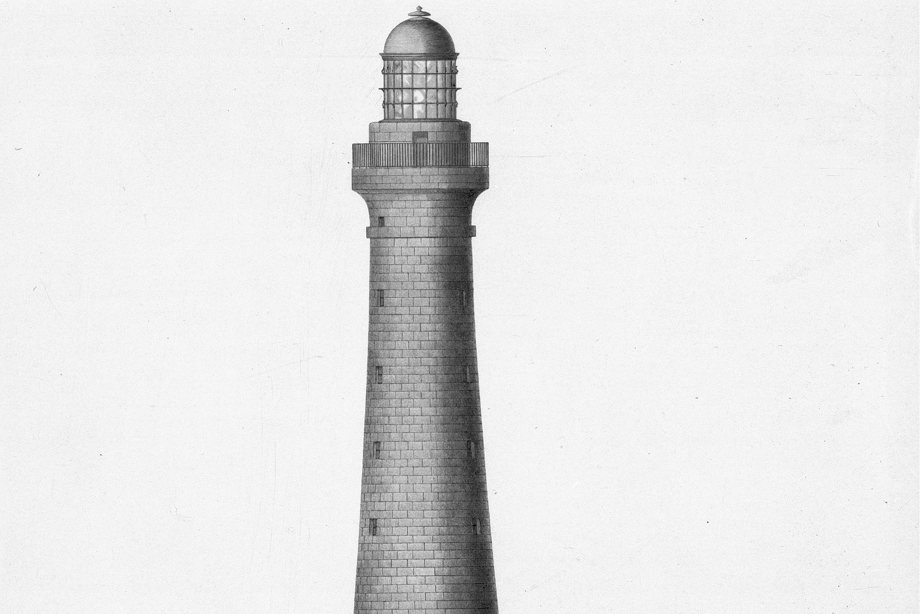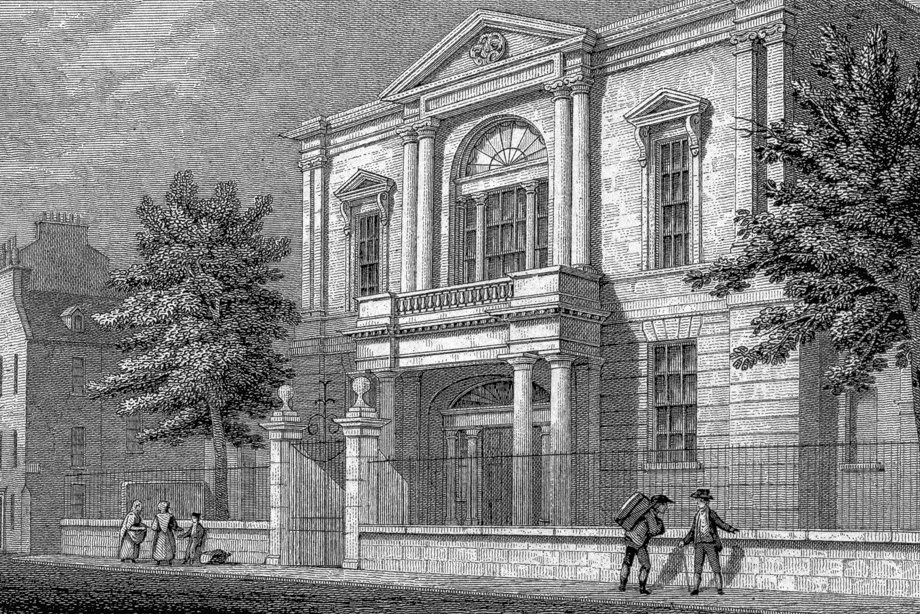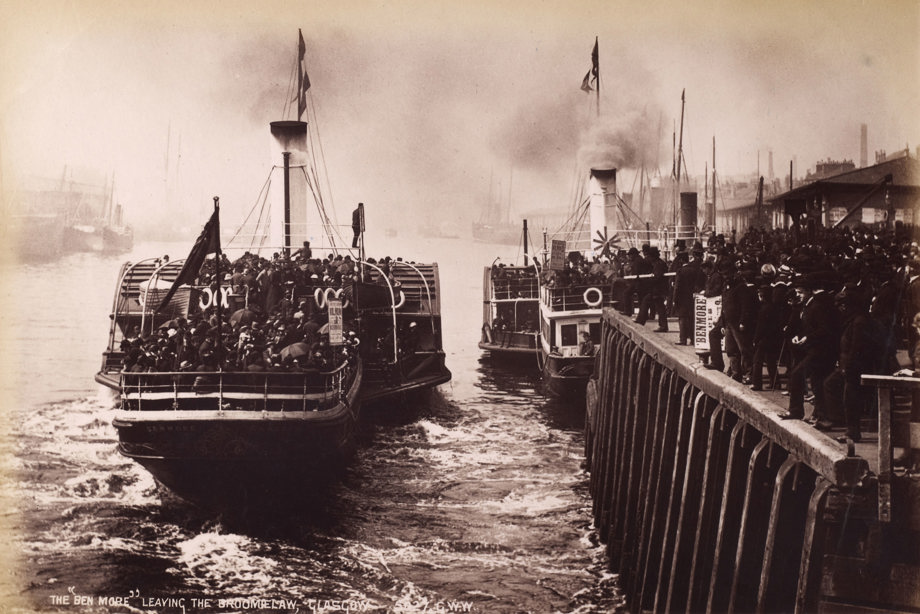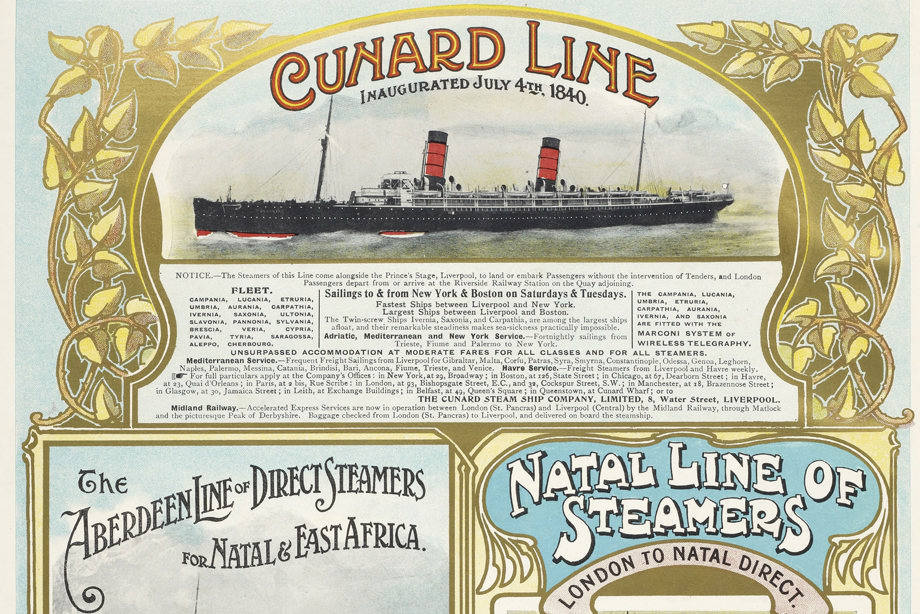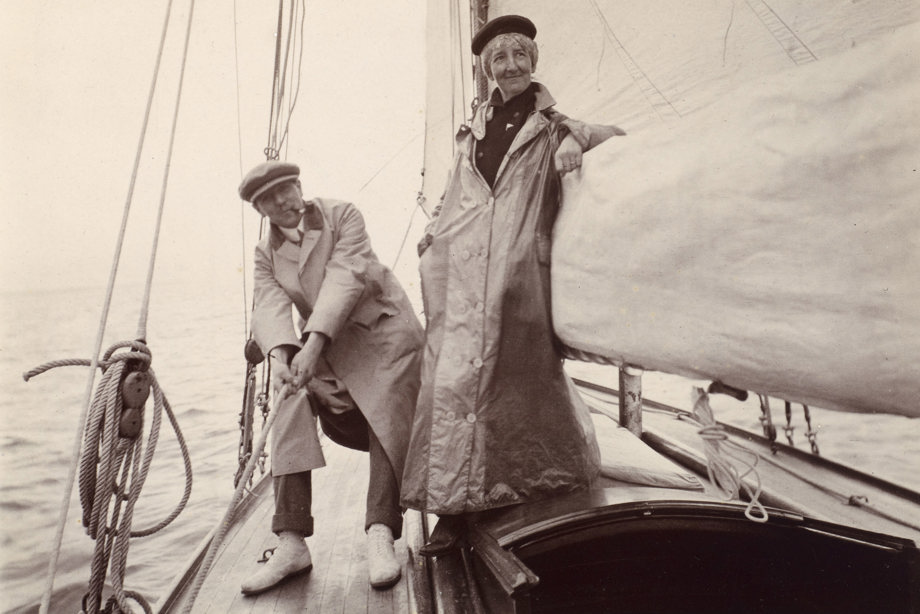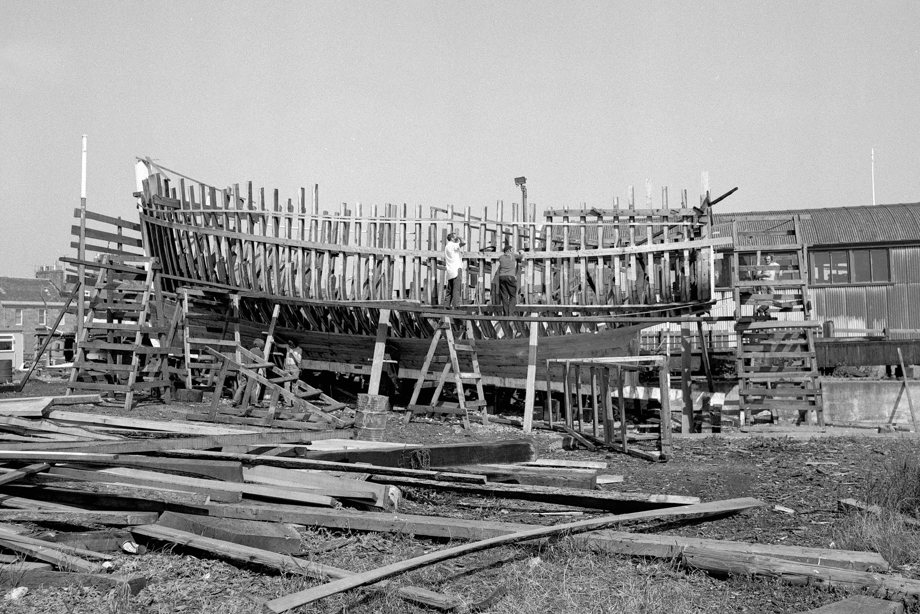Sailing conditions along the Scottish coast can be among the most dangerous in Europe. Navigating our perilous waters safely was particularly difficult before 1750 when charts for the whole coast were drawn up. The dangers of seafaring were not helped by the fact that the technology to build lighthouses as we know them today was not developed until the foundation of the Northern Lighthouse Board in 1786.
As voyages became safer and ships larger, many Scots emigrated to Canada to escape the Highland Clearances in the 19th century. Meanwhile, Irish immigrants arrived at Clyde ports already bustling with trade and day trippers, followed later by large groups from Italy, Russia and Poland.
While huge passenger ships were being produced on the Clyde, smaller boatyards continued to build wooden fishing boats. Elegant yachts and later smaller dinghies were also constructed as we began sailing for pleasure, as many still do today.
Bell Rock Lighthouse, Angus, 1824
Since the 16th century, man-made markers have been vital for helping ships safely navigate Scotland’s dangerous coastal waters.
Designed by Robert Stevenson and engineered by John Rennie, the Bell Rock Lighthouse, constructed 12 miles off shore on a platform of rock exposed only at low tide, was an amazing achievement.
This engraving shows the temporary lighthouse that housed fifteen men who built the permanent structure. Lighthouses were a target for sabotage during wartime, and the Bell Rock was machine-gun damaged by enemy aircraft in 1940, surviving a bomb attack the following year.
Manned until 1988, it is the oldest surviving rock-built lighthouse in Britain.
Skerryvore Lighthouse, Tiree, Argyll and Bute, c.1848
The graceful curve of Skerryvore rises to 48 metres, making it Scotland’s tallest lighthouse. Lying on a treacherous reef off the Hebrides, it was built to protect a shipping highway opening westwards towards America.
Alan Stevenson, whose father had built the Bell Rock Lighthouse, completed its challenging construction in 1844, the foundation pit alone having taken twenty men over 200 days to dig.
Skerryvore uses reflecting prisms rather than mirrors, which had been used in the Bell Rock Lighthouse, to throw light out into the darkness. After a devastating fire in 1954, Skerryvore was converted to electricity and was manned until 1994.
Trinity House, Leith, City of Edinburgh, 1820
Much of Scotland’s trade was carried out through the port of Leith, which therefore required an infrastructure to make sure it operated efficiently.
The Incorporation of Mariners and Shipmasters was founded in the early 1300s for the purpose of collecting dues from vessels using the port.
The money collected was used to plan and fund the building of lighthouses, provide nautical training and help mariners in need of financial support.
In 1816, the first Trinity House and sailors’ hospital was replaced with a grand new building to house the Incorporation, providing it with a guildhall, a customs hall and offices.
Paddle steamers at Broomielaw, River Clyde, City of Glasgow, 1885
Europe’s first commercial steamer service began operating from Broomielaw in 1812 and, as the popularity of pleasure cruises grew, it became the main embarkation point for catching a boat to go ‘doon the water’.
In 1850, 35 steamers left Broomielaw for the coast on the Glasgow Fair weekend with no less than 20,000 passengers aboard.
With Glasgow at its industrial, smoke-veiled peak, this was a much-valued chance to escape, if only briefly. It was also a place of arrival with thousands of Irish immigrants escaping from famine across the water.
Later in the 19th century, many Italians and Poles disembarked here looking for work, often settling in the west of the country.
Liner advertisement from Scotland’s Industrial Souvenir, 1905
Scotland developed a world-famous shipping industry in the 19th century. This trade catalogue of 1905 promoted the country’s wealth of industry including its boat-building and worldwide shipping.
The Aberdeen SS Line sailed from Britain to Australia and the Far East with 45 first- and second-class passengers enjoying ‘very fine accommodation’. For the 650 in third class it was undoubtedly less fine.
Built in Govan, the SS Aberdeen was a state-of-the-art steam ship. Ironically, she was sunk by a British submarine in 1915 having been sold to the Ottoman government in 1906.
Sailing on the west coast, c.1910
Sailing for pleasure, as well as for trade or travel, first became an organised leisure pursuit with the founding of the Royal Northern Yacht Club in Rothesay in 1824.
Over the course of the 19th century, the popularity of yachting increased rapidly, particularly on the west coast, and sailing became a social activity with clubs arranging racing regattas and hosting dinners and dances.
It was not all about competitive racing, however; taking a boat out for a day’s cruising, as this relaxed-looking pair are doing, was also a popular way to pass the time.
Gerrard Brothers boatyard, Arbroath, Angus, 1976
Small wooden vessels were built and repaired on the east coast from the 18th century until well into the 20th. Set up in the 1950s, Gerrard Brothers remained a family business until the decline of the Arbroath fishing fleet led to its closure in 1999.
This view shows a boat being built: the oak frame of the hull has been constructed and planks are being attached to it having been steamed to soften them so they can be curved into shape.
After larger, metal-framed boats became more widely used, yards such as this were no longer viable.
Scotland's Coast continued
Continue your exploration of Scotland's extraordinary coasts and waters.

